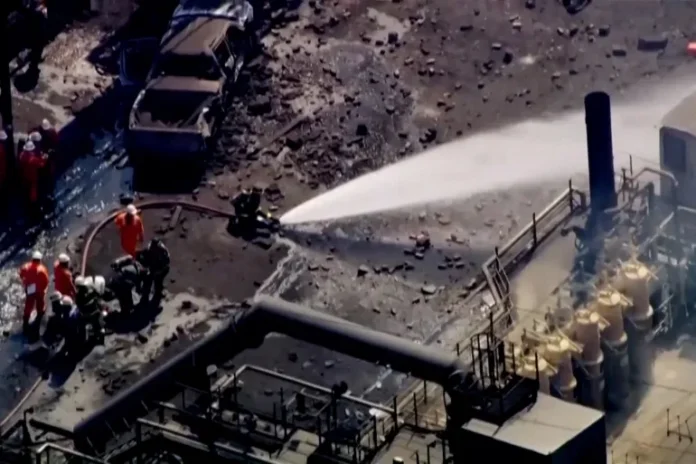Southern Europe’s latest heatwave has claimed at least one life in Spain and fueled wildfires across several regions, while the UK prepares for its fourth heatwave of the summer with temperatures expected to reach 34°C.
In Spain, President Pedro Sánchez confirmed on Tuesday that a man had died after suffering burns to 98% of his body in a blaze in the Tres Cantos municipality near Madrid. The victim was airlifted to hospital but later died from his injuries.
Officials said the fire, which broke out on Monday evening, has scorched more than 3,700 acres, damaged at least four homes, and forced 180 residents to evacuate.
Authorities in Madrid announced the blaze had been contained, but firefighting crews and aerial teams remained on the scene to extinguish lingering hot spots. Wildfires are also burning in Spain’s northwest and southern regions, prompting the Defense Ministry to deploy nearly 1,000 soldiers to help battle flames in six areas.
Spain’s meteorological agency AEMET has warned that temperatures could reach 44°C (111°F) in some parts of the country, with slightly cooler but still extreme heat forecast for Wednesday.
Across the Channel, the UK Health Security Agency (UKHSA) has issued amber and yellow heat health alerts for all of England, warning of a potential rise in deaths—particularly among people aged 65 and over or those with health conditions. Temperatures are expected to peak at 34°C in southern areas such as Berkshire, Oxfordshire, and the outskirts of London, with hot and dry conditions likely to persist through the week.
Officials have also raised concerns over “nationally significant” water shortages, despite rainfall in July. Five regions remain in drought status, with six others experiencing prolonged dry weather. The lack of water is damaging crops, reducing livestock feed, harming wetlands, and increasing the risk of wildfires.
Met Office forecasters say high pressure over Europe is drawing hot, humid air northwards, with Wednesday’s highs of 33–34°C expected in eastern England and slightly cooler conditions later in the week. The UK’s highest temperature this year remains 35.8°C, recorded in Kent on July 1.
Meanwhile, parts of France reached the low 40s on Monday, underscoring how heatwaves that are made more intense and frequent by climate change are gripping large swathes of Europe.

